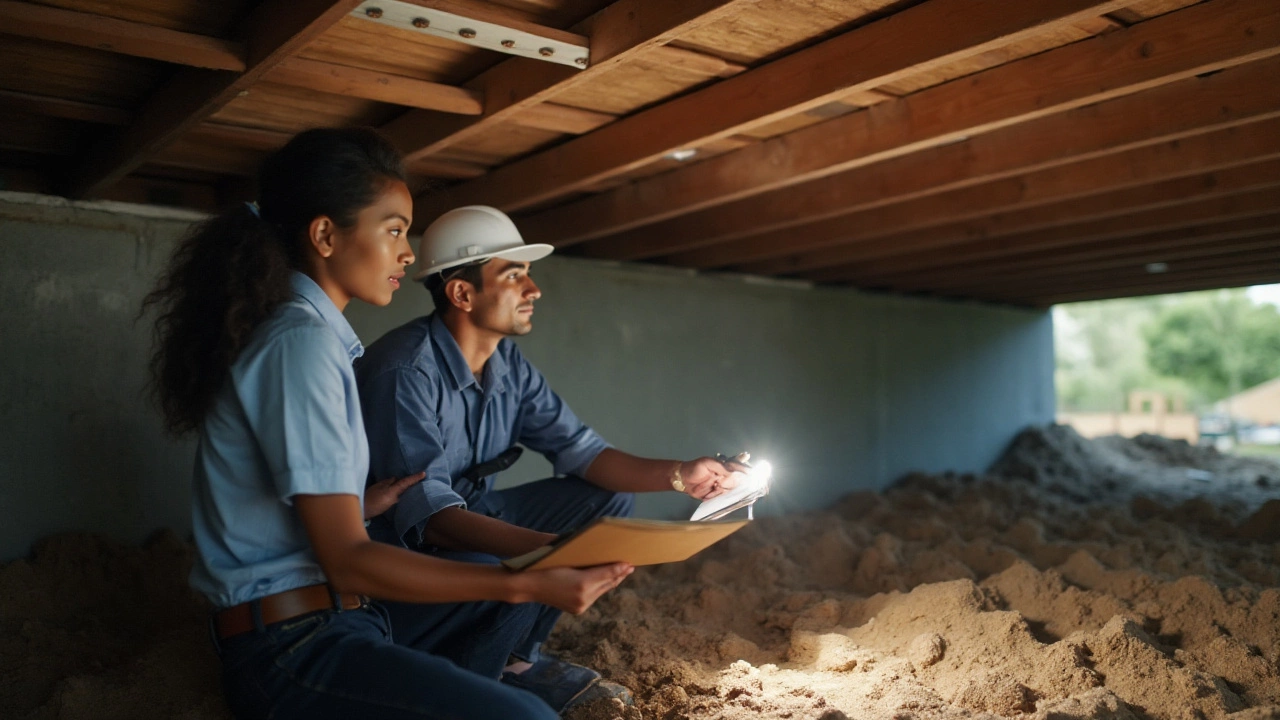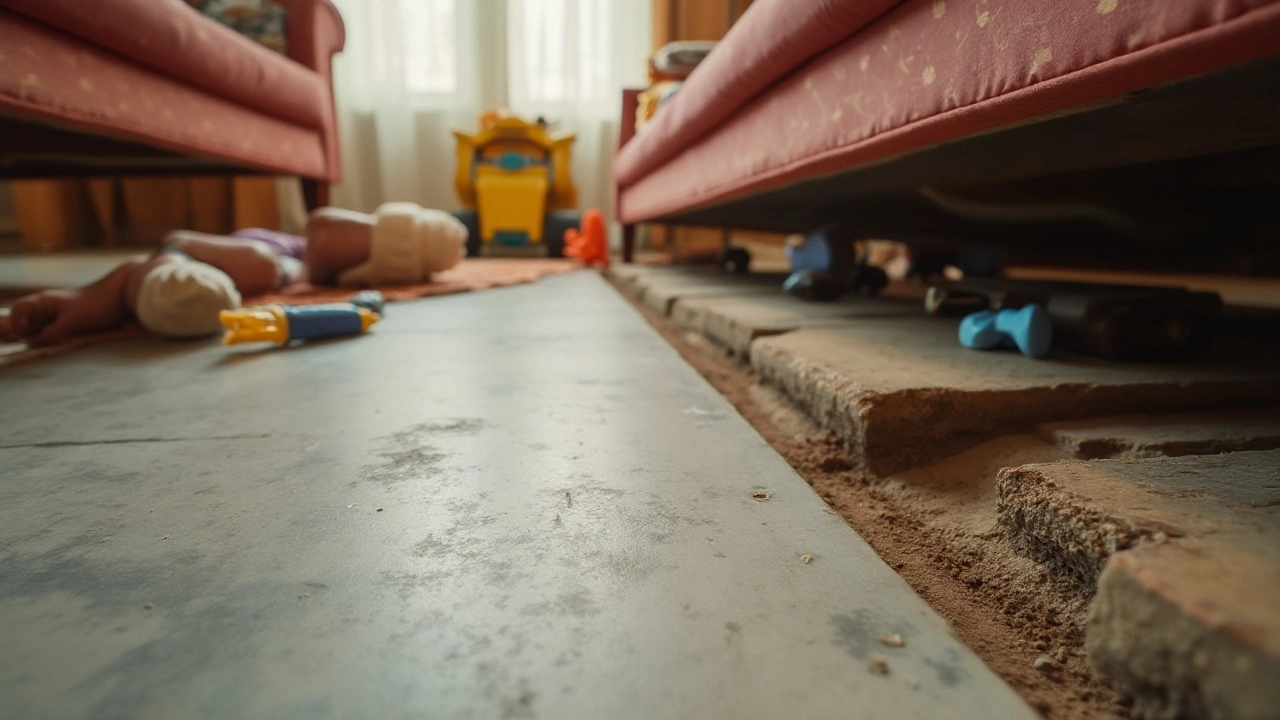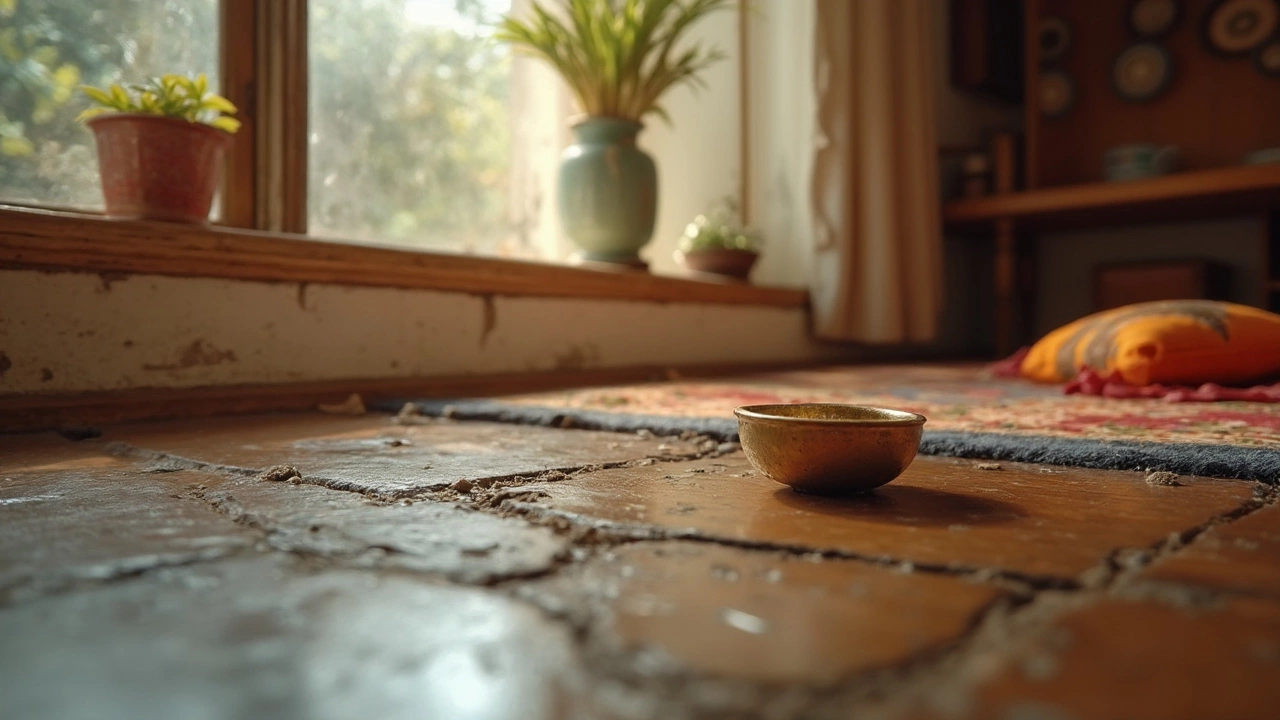Identifying Signs of Foundation Damage in Homes

Foundation issues are the stuff that homeowners' nightmares are made of, ranking right up there with leaky roofs and burst pipes. The good news is, there are usually telltale signs long before things reach a critical stage. From hairline cracks in your brickwork to floors that slope like a ski hill, these quirky problems can often tell you a lot about what's happening beneath your feet.
Understanding what to look for isn't just about peace of mind; it's about saving your home from potential disasters. By spotting the signs early, you can often nip things in the bud long before they spiral into more significant, more expensive issues. Whether it's soil movement or simple wear and tear, knowing how to identify these problems can keep your home in tip-top shape.
- Recognizing Signs of Trouble
- Common Causes of Foundation Issues
- When to Call a Professional
- Prevention and Maintenance Tips
Recognizing Signs of Trouble
Spotting foundation issues in your home isn't always as straightforward as it might seem, mainly because the symptoms can manifest in a variety of ways. One of the first indicators homeowners often notice is cracking. These cracks can appear in several locations but are most commonly seen in walls, floors, or even the foundation itself. They can range from tiny hairline fractures to more significant splits. It's essential to monitor these over time since expanding cracks can suggest more serious structural issues. Windows and doors that suddenly become difficult to open or close may also signal foundation trouble. This is often due to the shifting of the home, which causes frames to become warped.
Another apparent sign might be uneven or sloping floors. For instance, you may find that things seem to roll to one side of a room or that there are noticeable dips and bumps underfoot. This unevenness can sometimes be alarming, especially if it happens in multiple areas. Squeaking or creaking when you walk across certain parts of the floor can also indicate changes. According to a study conducted by the National Association of Home Builders, residential construction often hides these issues until they reach a more advanced stage, making it crucial to pay attention to subtle alterations.
"Foundation problems don't resolve themselves," cautions the Home Repair Clinic. "Taking quick action can prevent much larger issues in the future."
Water is another culprit that often highlights foundation damage signs. Check for moisture accumulation or water pooling around the base of your foundation, which can weaken structural integrity. Water stains on walls or persistent dampness might also indicate water ingress through compromised areas of the foundation. When water is involved, mold and mildew aren't far behind, and thus, early intervention is vital to avoid health problems and additional repairs.
It’s also important to keep an eye out for exterior signs, such as gaps around window frames, sagging rooflines, or separation around chimneys. These occurrences are more common than one might expect and should not be overlooked. Rooflines that aren’t as straight as they once were can be indicative of a shift in the underlying foundation. By regularly checking your property for these signs, you can catch the early signs of structural issues before they become severe problems. Regular inspections, vigilant observation, and early detection can substantially reduce repair costs.
Consider using a level for a more scientific approach to determine if areas of your floor are uneven. With this simple tool, homeowners can periodically assess whether the foundation might be moving or settling in unexpected ways. Sometimes, these shifts are due to natural settling, but consistent changes could portend deeper issues. Addressing these problems early can prevent the occurrence of foundation issues, ultimately preserving the value and safety of your home.

Common Causes of Foundation Issues
When it comes to the stability of your home, the foundation plays the starring role. Yet, despite its importance, many homeowners don’t realize that a multitude of factors can compromise its integrity. Among the most prevalent culprits is the expansive soil movement. Soil that expands when wet, known as clay soil, and contracts as it dries can exert tremendous pressure on a foundation. Over time, this can lead to cracks and other issues. According to the National Association of Home Builders, the conditions of the soil can be attributed to over 80% of foundation issues, emphasizing the importance of understanding your home's geological setting.
Another significant contributor to foundation issues is water damage, which often goes unnoticed. Poor drainage systems during heavy rainfall can lead to water pooling around the foundation, gradually eroding the soil and creating an unstable base. Harsh weather conditions, such as heavy snowfalls or lingering floods, can exacerbate this situation, causing soil to shift and settle unevenly beneath a home. This wet-and-dry cycle can deteriorate foundations much faster than one would expect, leaving visible and costly damage.
Mother Nature isn’t the only reason behind structural woes. Man-made actions like poor construction practices can leave homes vulnerable to structural issues. In many instances, contractors might cut corners by failing to compact soil properly or by neglecting to use suitable materials, both leading to weaknesses that can rip a structure apart over time. Even historical homes may share this plight, as what was once sound years ago can struggle under today's environmental and usage stresses.
Lastly, even something seemingly harmless like mature tree roots can spell trouble for your foundation. Trees seek out water, and if your pipes or foundation allow any moisture to escape, roots may invade, stressing concrete and pipes and opening paths for leaks and breaks. It’s fascinating how something so beneficial for our environment can have such a dramatic impact on a home's stability. Regular maintenance and being mindful of what’s planted near a foundation can mitigate this particular issue.
Understanding these causes helps highlight the importance of regular inspections and maintenance. Keeping a vigilant eye and proactively addressing these common foundation issues can prevent what might seem like a small nuisance today from turning into an expensive repair tomorrow.

When to Call a Professional
It's crucial to know when a foundation issue is beyond a bit of personal handy work and requires the expertise of a professional. Recognizing that calling in a specialist isn't just about pushing the panic button; it's a strategic move to save your home and wallet in the long run. Let's take a deeper dive into those signs screaming for professional intervention, starting with the notorious cracks.
Cracks can be deceptive; some might look like mere cosmetic issues, but others raise red flags. Vertical cracks might not always be alarming, but horizontal ones or those wider than a quarter-inch could shout structural calamity. These could suggest severe pressure against your foundation walls, which is not something a simple DIY repair can handle. Soil expansion, heavy moisture, and unstable ground can conspire to cause severe stress on your home's core, necessitating expert evaluation.
Don't underestimate the significance of floors that appear to be wavering. Sloping or bowing floors may hint at the foundation settling unevenly, a subtle call to action that shouldn’t be ignored. If you notice that sections of your floors are creaky or sagging, it's time to consult a professional. It might help reveal deeper problems associated with your home's structure, potentially saving you costly and extensive repairs down the road.
Sometimes it's as simple as checking fit. Doors and windows that don’t fit or latch properly can often indicate foundation shifts. While humidity and weather changes can cause wood to expand and contract, chronic misalignment may show something deeper at work. This is more than just a seasonal annoyance—it's an alert that your foundation might not be as static as it seems. These telltale signs deserve a deeper look under professional assessment.
"Your home's foundation could undergo pervasive stress that's unseen to the untrained eyes," advises Justin Littlefield, a seasoned structural engineer. "It's pivotal to address these concerns with professional insights before they evolve into monstrous repairs."The wisdom nestled in those words reflects the importance of acting on signs that seem benign but indicate a ticking time bomb under your home.
Also, be wary of water pooling close to your foundation, especially after heavy rainstorms. Water can erode even the sturdiest materials over time if it's not directed away effectively, creating weak points. While you might attempt to tackle this with drainage solutions yourself, a professional can provide a comprehensive system designed to protect your foundation optimally.
Before you decide to tiptoe into foundation repairs by yourself, consider the costs of potential blunders. Mistakes can be far more expensive than the price of professional service, leading to deep-seated issues that impact the home's value and safety. It's these scenarios where the touch of a skilled professional can prove invaluable. Don't gamble with one of your largest investments; make the proactive choice, safeguarding the future of your home with the expertise it might desperately need.

Prevention and Maintenance Tips
When it comes to safeguarding your home against foundation issues, a proactive approach always pays off. Routine maintenance and vigilance can avert the need for significant repairs down the line. It begins with keeping an eye on the drainage systems around your house. Poor drainage is often a villain in the saga of foundation damage signs. Making sure your gutters are clear and your downspouts extend at least five feet away from the foundation can prevent water buildup. You'd be surprised how much difference simple water management can make in maintaining foundation health over the years.
Beyond water management, consider the landscaping around your precious abode. Trees with expansive root systems, such as willows or oaks, should not be planted too close to the home as their roots can eventually encroach upon and dislodge your foundation. This isn't to say you should forgo greenery altogether, but rather choose wisely and plant trees at a safe distance. Shrubs can be a safer choice or you might opt for smaller decorative trees. Another intelligent move you can make is ensuring the soil around your foundation retains the right moisture level, neither too wet nor too dry, both conditions which can wreak havoc on stability by causing the soil to expand or contract excessively.
"The simplest way to avoid foundation problems is proper maintenance. Regular checks around the perimeter for water damage can provide early warnings of potential issues," says Steve Turner, a respected structural engineer.
If your house is built on expansive soil, seasonal changes might cause it to shift. A good strategy is to install an irrigation system that can regulate moisture in the soil consistently throughout the year. This little adjustment can save you a world of trouble and keep those pesky structural issues at bay. Keep an eye on your walls and floors for any developing cracks or unusual movements and address them promptly. Small things like these, when ignored, can magnify into costly repairs in the future. Periodic inspections by a licensed professional can provide insights that might elude even the most experienced homeowners.
When thinking about heating and cooling, always account for potential effects on the foundation. Extreme temperature fluctuations can contribute to cracks and other issues in your home’s structure. Insulating your home well can mitigate some of these effects. Keeping the temperatures steady not only enhances comfort but also contributes to the longevity of the house’s base. Regular checks on vents and ducts can ensure they're functioning efficiently without causing unintended damage.
To help you keep track of these precautions, here’s a succinct plan you might follow monthly:
- Inspect: Check the perimeter for water pooling and ensure proper drainage.
- Control Vegetation: Monitor and adjust landscaping if necessary to keep roots from encroaching on the foundation.
- Check Soil Moisture: Be aware of soil conditions and adjust irrigation to maintain balance.
- Monitor Cracks: Regularly examine walls and floors and repair any small cracks immediately.

